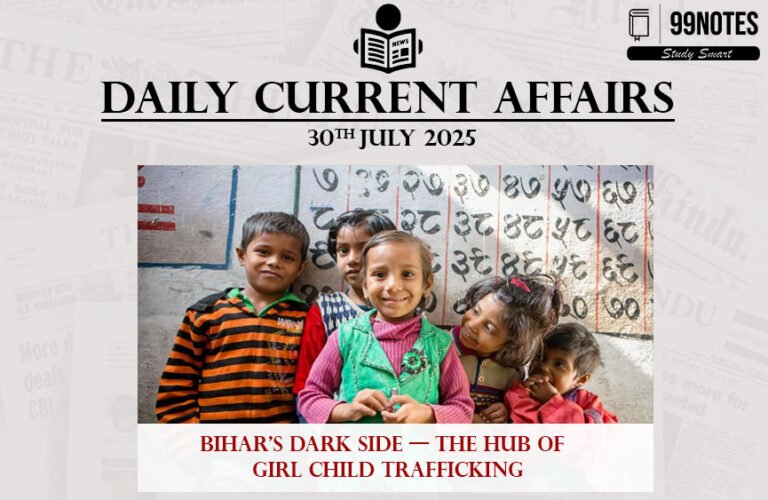15 September 2023 : Daily Current Affairs
Daily Current Affairs
- 1. Central team of officials to visit Nipah-hit areas today.
- 2. Are corruption cases driven by political rivalries?
- 3. Shah asks officials to use simple, clear Hindi; says it ‘united’ people of country
- 4. Hopeful about Women’s Reservation Bill: BJP leader
- 5. PMMSY: bridging gaps in the fisheries sector.
- 6) OIML CERTIFICATES
- 7) National Judicial Data Grid
- 8) India-Saudi Arabia Relations:
15-September-2023
Daily Current Affairs For UPSC ,Daily Current affairs of The hIndu and Indian Express.
1. Central team of officials to visit Nipah-hit areas today.
Topic: GS3 – public health.
Context:
- A Central team of officials is scheduled to visit Maruthonkara and Ayancheri areas in Kozhikode district, Kerala, following recent Nipah virus-related deaths.
- Five people have tested positive for the Nipah virus, with two fatalities, and others are currently receiving treatment.
More about Nipah virus:
- Nipah Virus (NiV): Zoonotic virus transmitted from animals to humans.
- Origin: First identified in Malaysia in 1998, named after Sungai Nipah village.
- Natural Reservoir: Fruit bats (Pteropus genus).
- Transmission to Humans: Contact with infected animals, contaminated food, or respiratory secretions.
- Symptoms: Fever, headache, nausea, respiratory issues; severe cases lead to encephalitis.
- Prevention: Avoid close contact with infected animals, raw date palm sap; practice good hand hygiene.
- Vaccine: No approved vaccine.
- High Mortality: Mortality rate varies (40-75%) depending on outbreak and medical care.
2. Are corruption cases driven by political rivalries?
Topic: GS3 – Indian polity
Context:
- Several prominent political leaders, including N. Chandrababu Naidu, Manish Sisodia, V. Senthil Balaji, and K. Ponmudy, have been arrested on corruption charges in recent times.
- The timing of these arrests has raised questions, particularly in the context of upcoming elections.
- Critics argue that these arrests may be politically motivated and aimed at targeting opposition leaders.
The issues mentioned in the article include:
- Independence of Law-Enforcement Agencies: Concerns are raised about the independence of law-enforcement agencies such as the CBI and ED, with allegations that they may be influenced by political agendas.
- Politicization of Investigations: The article highlights the long-standing issue of investigations becoming politically motivated, particularly when a ruling party uses investigative agencies against political rivals.
- Lack of Independent Investigative Machinery: The absence of a fully independent investigative machinery is discussed as a challenge in ensuring impartial investigations.
- Role of Lokpal and Lokayukta: The effectiveness of institutions like Lokpal and Lokayukta in addressing corruption cases is being questioned, as their impact appears limited.
- Intimidation and Defections: Some prosecutions are seen as attempts to intimidate politicians into joining the ruling party or securing defections from other parties.
- Weaponization of Legal Processes: The article points out the concerning trend of weaponizing legal and investigative processes, potentially undermining the independence of agencies and the rule of law.
- Impact on Rule of Law: These issues collectively raise concerns about the state of law and order and the impartiality of investigations within India’s political landscape.
Impact of politically driven corruption cases with upcoming elections:
- Politically driven corruption cases can influence voter perceptions and impact election outcomes.
- Corruption cases can disrupt election campaigns, diverting resources and attention from core issues.
- Intra-party conflicts and defections may occur as politicians facing charges seek shelter in other parties.
- Lengthy legal battles can create uncertainty for politicians and affect long-term party strategies.
- Coalition politics can be strained as corruption cases affect alliance dynamics.
- Public perception of government accountability is shaped by the handling of corruption cases.
- The independence and integrity of the judiciary are crucial in ensuring fair and transparent legal proceedings.
Mains question: How do politically driven corruption cases impact India’s electoral dynamics and the functioning of its political system?
3. Shah asks officials to use simple, clear Hindi; says it ‘united’ people of country
Topic: GS3 – governance
Context:
- Union Home Minister Amit Shah emphasizes the use of simple and clear Hindi words in office work.
- He discusses the principle of language change, stating that languages tend to move from complexity to simplicity.
- Amit Shah highlights the significant role of the Hindi language in uniting India during the Independence movement.
- He notes that Hindi has been a democratic language, respecting various Indian languages, dialects, and global languages.
Advantages of Hindi as lingua franca:
- Promotes national integration and unity in linguistically diverse India.
- Facilitates effective communication across different linguistic backgrounds.
- Enhances administrative efficiency and uniformity in government affairs.
- Enables cultural exchange and access to diverse traditions.
- Supports political representation and participation in democratic processes.
- Serves as a medium of instruction in education.
- Connects with Hindi-speaking communities globally.
- Encourages multilingualism and preservation of indigenous languages.
Challenges associated with implementation of Hindi as lingua franca:
- Linguistic Diversity: India has numerous languages and dialects, making language unification challenging.
- Identity and Regionalism: Strong regional identities often resist the dominance of Hindi.
- Education Disparities: Regional languages are the primary medium of instruction in many states.
- Communication Hurdles: Adoption of Hindi can be difficult, particularly in rural areas.
- Political Sensitivities: Language issues are often exploited for political gains.
- Bilingual Proficiency: Not all citizens are proficient in Hindi.
- Language Policies: India’s language policy aims to balance multiple languages.
- Resistance and Protests: Historical protests against Hindi imposition have occurred.
Mains Questions: Discuss the challenges and complexities associated with promoting Hindi as a lingua franca in India. How can the government address these challenges while preserving linguistic diversity and cultural identities?
4. Hopeful about Women’s Reservation Bill: BJP leader
Topic: GS3 – Indian polity
Context:
- BJP Mahila Morcha chief, Vanathi Srinivasan, expressed hope for the Women’s Reservation Bill’s approval.
- Speculation suggests the bill might be among the first legislations considered during the Special Session of Parliament.
Present status of woman representation in Indian Parliament:
- Lok Sabha (Lower House):There are 78 women members of the Lok Sabha, which constitutes 14.4% of the total membership. This is the highest proportion of women representatives elected to the Lok Sabha so far.
- Rajya Sabha (Upper House): There are 24 women members of the Rajya Sabha, which constitutes 11.2% of the total membership.
Need for Women’s Reservation Bill:
- Gender Equality: The bill aims to address gender disparities in political representation by reserving seats for women.
- Political Empowerment: It empowers women to participate actively in decision-making processes.
- Diverse Perspectives: Ensures diverse perspectives in governance, benefiting society as a whole.
- Equality of Opportunity: Provides equal opportunities for women in politics, a traditionally male-dominated sphere.
- Global Norms: Aligns with international practices promoting women’s participation in politics.
- Balanced Governance: Contributes to balanced and inclusive governance, considering women’s unique needs and viewpoints.
- Addressing Gender Bias: Mitigates biases and prejudices against women in politics.
- Enhancing Democracy: Strengthens democratic principles of representation and inclusivity.
- Encouraging Female Leadership: Encourages women to take leadership roles and contribute to nation-building.
Challenges ahead:
- Political Opposition: The bill faces resistance from some political quarters, hindering its passage.
- Cultural Traditions: Deep-rooted patriarchal norms and traditions can impede women’s political participation.
- Implementation Concerns: Challenges in effectively implementing the reservation system and ensuring its success.
- Incremental Change: Progress in gender equality may be slow and gradual.
- Backlash: Potential backlash from male politicians and conservative segments of society.
- Intersecting Identities: Intersectional challenges where women from marginalized backgrounds face additional obstacles.
- Reservation Quotas: Balancing quotas for women with those for other marginalized groups.
- Changing Mindsets: Shifting societal mindsets towards accepting women in leadership roles.
Mains questions: What are the key challenges facing the Women’s Reservation Bill in India, and how can these challenges be addressed to promote greater gender equality in political representation?
5. PMMSY: bridging gaps in the fisheries sector.
Topic: GS3 – Government initiatives
Context:
- The COVID-19 pandemic posed a threat to these reforms, but the PM announced the Atmanirbhar Bharat package for the fisheries sector, allocating ₹20,050 crore for the Pradhan Mantri Matsya Sampada Yojana (PMMSY).
More About Pradhan Mantri Matsya Sampada Yojana (PMMSY):
- PMMSY focuses on various aspects of the fisheries value chain, including production, productivity, technology, post-harvest infrastructure, and marketing.
- It identified strategic priority areas such as marine fisheries, inland fisheries, fishermen’s welfare, infrastructure, and post-harvest management.
- PMMSY empowered youth and women entrepreneurs to venture into fisheries, leading to success stories in various regions.
- The program expanded fisheries to non-traditional areas, including landlocked regions like Haryana and Rajasthan.
- PMMSY supported research, genetic improvement, and domestication of shrimp species, making India a top producer and exporter in fish and aquaculture.
- The government announced a sub-scheme with an investment of ₹6,000 crore under PMMSY, totaling more than ₹38,500 crore investment in fisheries over nine years.
- The partnership between fishermen and the government aims to harness the potential of the Blue Economy, promoting development and prosperity.
- The article highlights the positive impact of PM Modi’s efforts in supporting the fishing community and their development.
6) OIML CERTIFICATES
Topic: Prelims, GS2-Govt policies and intervention
Context:
- The Legal Metrology Division of the Department of Consumer Affairs has been authorised to issue OIML certificates which implies that India can now issue OIML certificates.
What is the OIML?
- The OIML stands for International Organisation of Legal Metrology.
- Established in1955 and headquartered in Paris, the OIML is a standard-setting body that develops model regulations, standards and related documents for use by legal metrology authorities and the industry.
- It plays a crucial role in harmonizing laws and regulations on performance of measuring instruments, such as clinical thermometers, alcohol breath analysers, radar speed measuring instruments, ship tanks found at ports, and petrol dispensing units.
- India joined the OIML in 1956, and signed the metric convention.
- India applied to become an OIML certificate-issuing authority in March 2023.
What is the OIML certificate?
- The OIML-CS is a system for issuing, registering and using OIML certificates, and their associated OIML type evaluation/test reports, for instruments like digital balance, clinical thermometers,etc.
- With India, the number of countries authorized to issue OIML certificates has increased to 13.
- Before this, Australia, Switzerland, China, Czech Republic, Germany, Denmark, France, UK Japan, Netherlands, Sweden, and Slovakia had the authority.
Example to illustrate its utility:
- Suppose there is an equipment-manufacturer making digital balances in Noida, and he wants to export to America or to any other country.
- Earlier, he would be required to go to one of the 12 other countries for certification.
- Now, the certificates can be issued in India and the equipment will be exportable, acceptable to the entire world.
How will this help the Indian economy?
- Increase in exports
- earning of foreign exchange
- generation of employment
- will help in reducing redundancy and saving resources.
7) National Judicial Data Grid
Topic: Prelims, GS2-Governance
Context:
- The Supreme Court announced the onboarding of its case data on the National Judicial Data Grid (NJDG), the national repository of data on cases instituted, pending, and disposed of by courts around the country.
What is NJDG?
- The National Judicial Data Grid (NJDG) is a comprehensive online database that aggregates orders, judgments, and case details from District and Subordinate Courts and High Courts as part of the eCourts Project.
- It serves as a platform for accessing judicial proceedings and decisions from computerized courts across the country.
- With nearly real-time updates, this platform offers a wealth of data related to legal proceedings at the district, subordinate, and high court levels.
- Under the umbrella of the eCourts Project, the NJDG has emerged as a groundbreaking online platform, encompassing data on orders, judgments, and case specifics from 18,735 District and subordinate Courts and High Courts.
- This digital repository is updated in near real-time by linked District and Taluka courts, furnishing an intricate tapestry of judicial proceedings from across the nation.
Benefits
- Monitoring Tool:NJDG effectively identifies, manages, and reduces case pendency, streamlining judicial processes.
- Policy Insights:NJDG offers timely data for policymaking, enabling informed decisions that mitigate delays in case disposal.
- Performance Enhancement:The system aids in monitoring court performance, and optimizing resource allocation for efficient operations.
- Transparency: NJDG fosters transparency by making case-related information accessible to stakeholders, promoting openness.
8) India-Saudi Arabia Relations:
Topic: GS2-IR
Context:
- Prince Mohammed visited New Delhi over the weekend for the G20 Leaders’ Summit, where he, along with Prime Minister Narendra Modi and President Joe Biden, announced the India-Middle East Europe Economic Corridor, a massive infrastructure project that would connect India to Europe via West Asia, and could rival China’s Belt and Road Initiative.
Four pillars of the relationship:
For India, there are four key elements of the strategic ties with Saudi Arabia:
ECONOMIC TIES:
- India is Saudi Arabia’s second largest trade partner;
- Saudi Arabia is India’s fourth largest trade partner.
- Bilateral trade in FY 2022-23 was valued at $52.76 billion.
- Trade with Saudi Arabia accounted for 4.53% of India’s total trade in FY23
ENERGY COOPERATION:
- Saudi Arabia is a key partner for ensuring India’s energy security, and was its third largest crude and petroleum products source for FY23.
- India imported 39.5 million metric tonnes (MMT) of crude from the country in FY23, amounting to 16.7% of India’s total crude imports.
- India’s LPG imports from Saudi Arabia stood at 7.85 MMT, and 11.2% of its total petroleum product imports, in FY 23.
DEFENCE PARTNERSHIP:
- The defence partnership has witnessed tremendous growth in recent years.
- There is extensive naval cooperation between India and Saudi Arabia, and two editions of the bilateral naval exercise, Al Mohed al Hindi, have been concluded so far.
- Both sides also cooperate closely in the domain of defence industries and capacity-building.
- The two sides commended their deepening cooperation, and agreed to continue work including joint exercises, training and high-level visits, and to consider possibilities of joint development and production of defence equipment.
INDIANS IN SAUDI:
- The Indian community in the kingdom is more than 2.4 million strong, widely respected for its contribution to the development of Saudi Arabia, and seen as a living bridge between the two countries.
- Indian side thanked the Saudi side for taking excellent care of the Indian diaspora, supporting the evacuation of Indian nationals stranded in Sudan through Jeddah under Operation Kaveri, and for facilitating Indian Hajj and Umrah pilgrims.
For Enquiry

15 September 2023 : Daily Current Affairs

Transport, Communication and International Trade Mains Test

Tertiary and Quaternary Activities Mains Test

Primary and Secondary Activities Mains Test

Human Development Mains Test

Population and Human Settlements Mains Test

14 September 2023 : The Hindu Editorial Notes PDF

Soil and Natural Hazards Mains Test

Vegetation Mains Test

Indian Climate – Monsoon system Mains Test
Daily Current Affairs 15 September 2023 : Daily Current Affairs Daily Current Affairs
15-September-2023
Daily Current Affairs For UPSC ,Daily Current affairs of The…
Daily Mains test Series Transport, Communication and International Trade Mains Test Mains Test Series
Transport, Communication and International Trade
Q. Discuss the feature and potential…
Daily Mains test Series Tertiary and Quaternary Activities Mains Test Mains Test Series
Tertiary and Quaternary Activities
Q. Discuss the potential of tertiary sector industries…
Daily Mains test Series Primary and Secondary Activities Mains Test Mains Test Series
Primary and Secondary Activities
Q. The food processing industry in India has emerged…
Daily Mains test Series Human Development Mains Test Mains Test Series
Human Development
Q. Critically examine India’s poor performance in human development…
Daily Mains test Series Population and Human Settlements Mains Test Mains Test Series
Population and Human Settlements
Q. Write a Short note on Jarawas, Todas and Santhals….
September- The Hindu Editorial 14 September 2023 : The Hindu Editorial Notes PDF The Hindu Editorial
14-September-2023
Daily Current Affairs For UPSC ,The Hindu Editorial Summary
Facebook-f
Twitter
Youtube
The…
Daily Mains test Series Soil and Natural Hazards Mains Test Mains Test Series
Soil and Natural Hazards
Q. Both causes and consequences of the urban and rural floods…
Daily Mains test Series Vegetation Mains Test Mains Test Series
Vegetation
Q. Critically examine the impact of wasteland development on the food, fodder…
Daily Mains test Series Indian Climate – Monsoon system Mains Test Mains Test Series
Indian Climate – Monsoon system
Q. How much can the changing nature of the Indian Monsoon…




